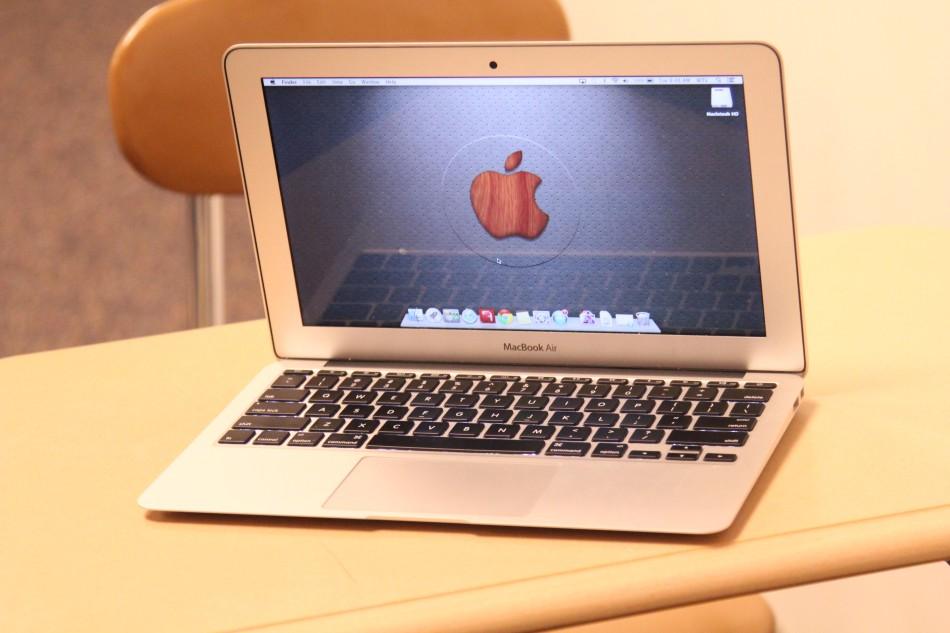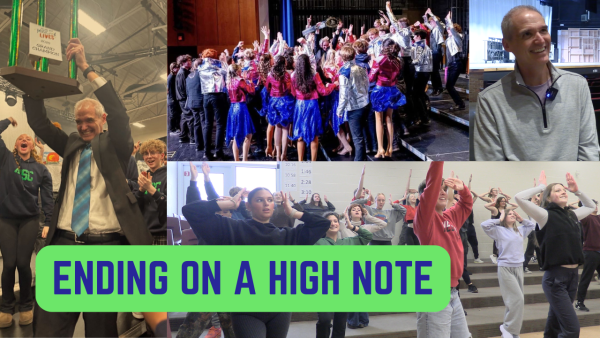New Computers, Other Possible Tech Changes Discussed at School Board Meeting
At the District 66 school board meeting Monday, April 7, a technology refresh was proposed by District Technology Coordinator Paul Lindgren, who was the leader in developing the plan. The proposal included giving 11-inch MacBook Airs to 7th through 12th graders, iPads with Retina display to kindergartners through 6th graders, and 13-inch MacBook Airs to teachers, as well as placing Apple TVs in every instructional space in the district and implementing a networking upgrade, which would include placing access points in every instructional space in the district.
The proposal is scheduled to be voted on at the May 5 school board meeting, although there was talk amongst the school board members of a possible one-issue school board meeting to approve of the plan before that date.
With the addition of one-to-one iPads for K-6 (whether students would be able to take home the devices is still undecided) and one-to-one MacBook Airs for seventh grade, the district would be one-to-one for K-12, a major expansion from the program’s original start at the high school in 2001.
“[There is] a disparity in the integration of technology just because at the elementary level they just don’t have the same opportunities that [high schoolers] have as far as the access,” Lindgren said. “And when that access isn’t there, I just see that there’s hurdles that teachers would have to overcome, friction that they have to overcome so it becomes a logistical issue of, ‘Can I schedule that cart before another teacher gets to it before I can have it,” and any time you introduce those things, it reduces the amount that it’s used and the freedom teachers have to use that, so that’s why we say it’s really important to do [make the whole district one-to-one].”
Originally, the plan had included first-generation iPad Minis for K-6, but the full-sized version was made possible by the re-release of the fourth-generation iPad for sale by Apple.
At the high school, the 11-inch MacBook Airs were put in the plan for a number of reasons, mostly cost, weight and speed. Although the 13-inch MacBook Pro (the older, unibody version) and 13-inch MacBook Air were discussed, the 11-inch MacBook Air was ultimately chosen.
“Really, price-wise, the 11-inch is the cheapest,” said District Technology Integrationist Matt Lee, who aided Lindgren in some of the development of the plan. “When you have so many students, that makes a big deal for the budget. And when we talked to some students and kind of focused it a little bit, people were complaining about their backpacks being really heavy, about their computers being slow, and we think the 11-inch air is a good compromise. It’s got a solid state drive, so it’s got a lot of speed. It’s smaller. It’s lighter. But it still has a full-size keyboard on it and it still has all the capabilities.”
For teachers, the 13-inch MacBook Airs would include a more powerful RAM and an upgraded hard drive. Lindgren said that the 13-inch Macbook Air was not the original choice for the teachers.
“As far as the teacher machines, we looked originally at doing an older MacBook Pro, but I had someone talk me into thinking different, but with the change that they re-released that iPad, it really gave us more options to be able to go to that 13-inch for the teachers,” Lindgren said.
If passed by the school board, the changes would be put into effect over the summer. The district would sell much of its old technology equipment, which Lindgren said would equate to about $1 million in revenue (which was one of the main factors in getting the cost of the plan to $1.3 million). The next technology refresh would occur in four years, rather than the traditional three, under the new plan.
Overall, the changes are meant to push the district towards achieving Superintendent Blane McCann’s vision of personalized education, according to Lee. He said for students at the high school, the updates will create more seamless technology-based learning.
“At the high school, you’re going to be getting [faster] machines that should alleviate some of the bottlenecks that you’re experiencing now,” Lee said. “Right now, some kids get frustrated because iMovie takes a long time to open, or if you’re dealing with files, it takes a long time to process. Hopefully those barriers get taken away. Or when you’re trying to access websites, the network gets congested or slowed down. Hopefully these infrastructure improvements will make it so that you can actually get to those websites.”Update: The District 66 School Board voted unanimously (with one board member absent) to approve the plan.
Your donation will support the student journalists of Omaha Westside High School. Your contribution will allow us to purchase equipment and cover our annual website hosting costs.







